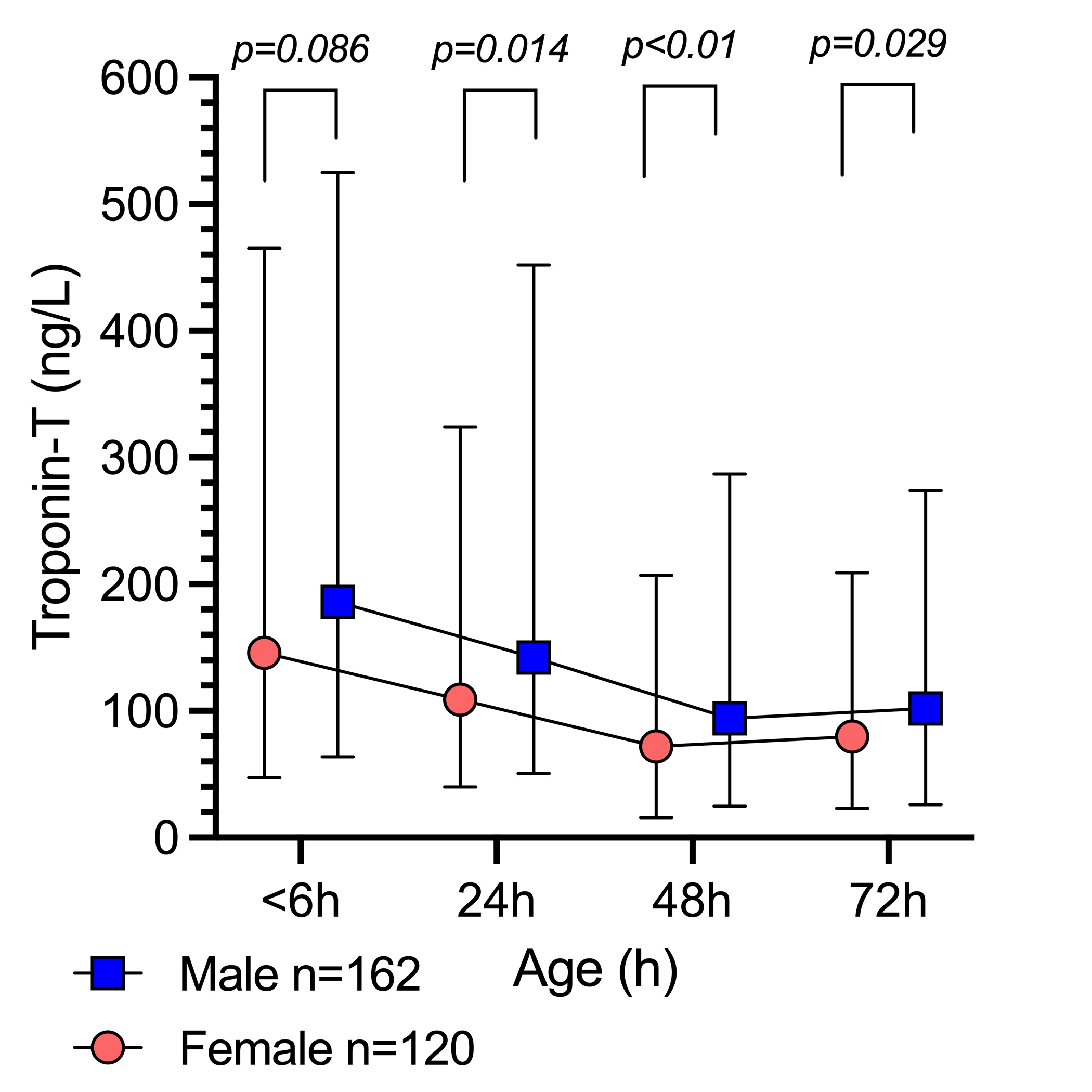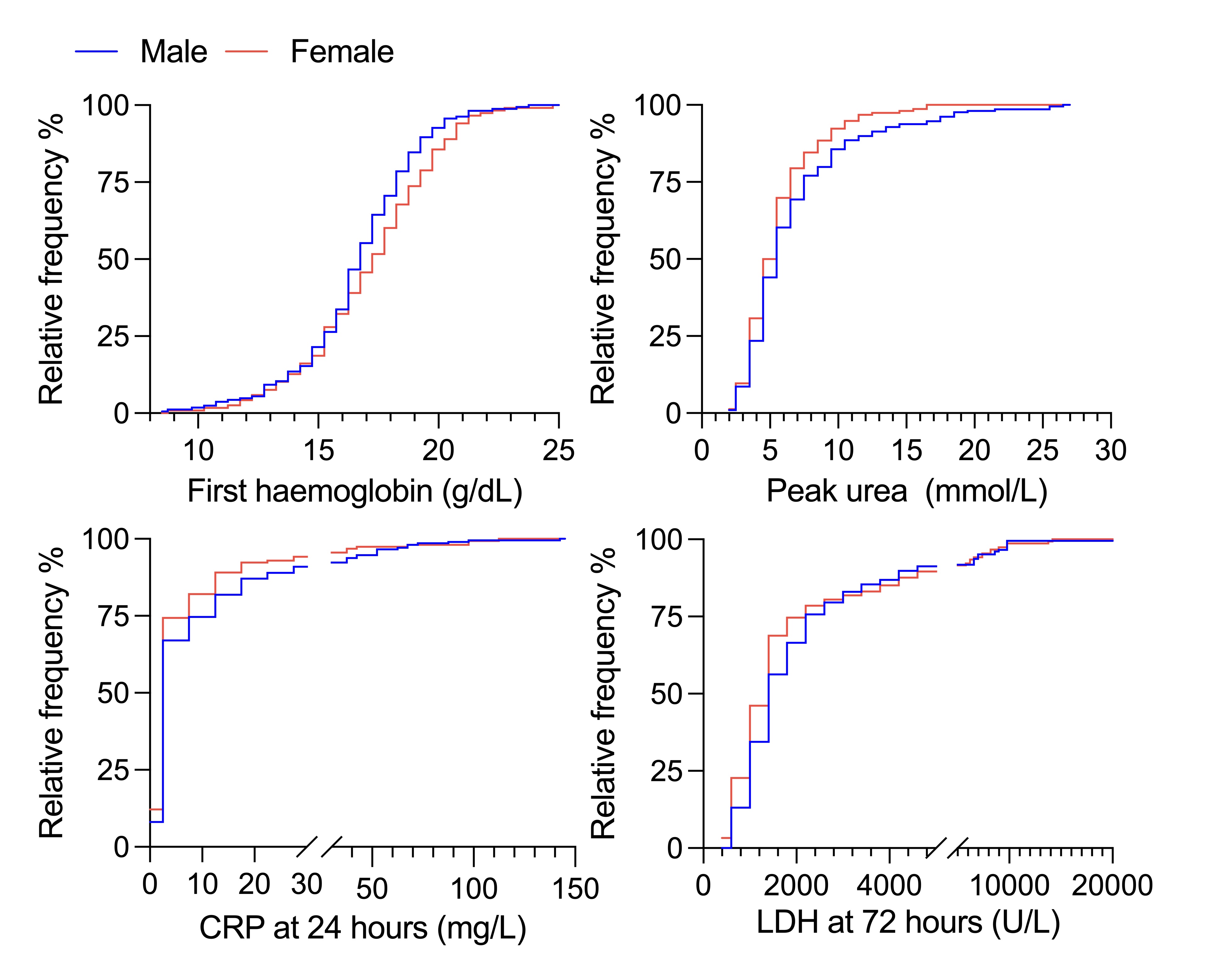Neonatal Neurology: Clinical Research
Neonatal Neurology 2: Clinical 2
171 - Sexual dimorphism of troponin-T and other biochemical markers in term-born infants with hypoxic-ischemic encephalopathy undergoing therapeutic hypothermia
Publication Number: 171.136

Julia K. Gundersen (she/her/hers)
Medical student / PhD
University of Oslo
University of Oslo
Oslo, Oslo, Norway
Presenting Author(s)
Background:
Increasing evidence suggests male vulnerability to neonatal hypoxic-ischemic encephalopathy1 (HIE) and adverse outcome2, emphasizing the need to explore sexual dimorphism of potential early outcome predictors, such as biochemical markers of severity. To which degree sex differences are apparent in the first hours and days after injury remains unknown.
Objective:
We compared common biochemical variables sampled before and during TH to explore potential sex differences.
Design/Methods:
We collected biochemical data in a prospective population-based cohort of 365 (57% males) infants with HIE undergoing 72h of whole-body TH. Deceased infants were included the analyses. Infants were recruited to TH with updated TOBY-criteria. All first blood values were sampled prior to onset of TH. Blood gas, first glucose and first lactate were sampled from cord blood or central vessels within 1h of life. The first sample of lactate dehydrogenase (LDH), troponin-T (TnT), creatinine, urea, magnesium (Mg), haemoglobin, platelets, INR, APTT and CRP were sampled < 6h of age. Later values were collected after onset of TH at 24h, 48h or 72h of age. Statistical sex differences were examined with two-sample Mann-Whitney test or Pearson’s chi-squared test with (n-1) correction.
Results:
Severity of encephalopathy was comparable between the sexes. Results from the statistical analyses are displayed in table 1. We detected significant sex differences in TnT at 24h, 48h and 72h of age (fig. 1). Despite not being significant at 0.05-level, the first and peak TnT value trended with a significance of < 0.10. Moreover, an isolated significant sex difference was seen in CRP at 24h and LDH at 72h, but neither the first nor peak values were sex dependent. Likewise, first haemoglobin and peak urea trended with a significance of < 0.10.
Conclusion(s):
We report sexual dimorphism of TnT in term-born infants with HIE present at birth and sustained throughout TH (fig. 1). Sexual dimorphism of TnT is reported in healthy infants3, yet has previously remained unexplored in the HIE-population. It is unknown to which degree clinicians should consider the patient´s sex when interpreting TnT values. Analysis of CRP, LDH, urea and haemoglobin suggested some sex dependence (fig. 2), but the clinical significance remains unclear. Studies with long-term outcomes are necessary to further our understanding of sexual dimorphism of HIE.
1. Wu, Y. W. et al. Am. J. Obstet. Gynecol. 204, 37.e1–6 (2011).
2. Romeo, D. M. et al. Dev. Med. Child Neurol. 58, 809–813 (2016).
3. Karlén, J., et al. Pediatr. Cardiol. 40, 1645–1654 (2019).


.jpg)
